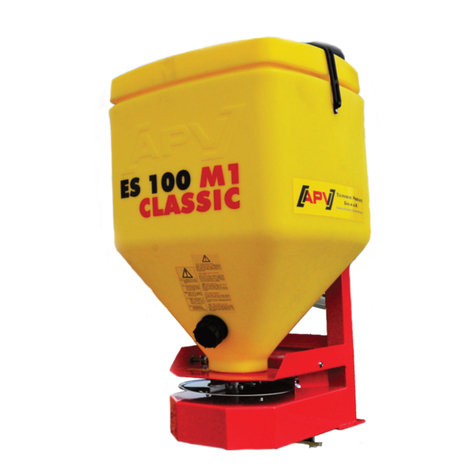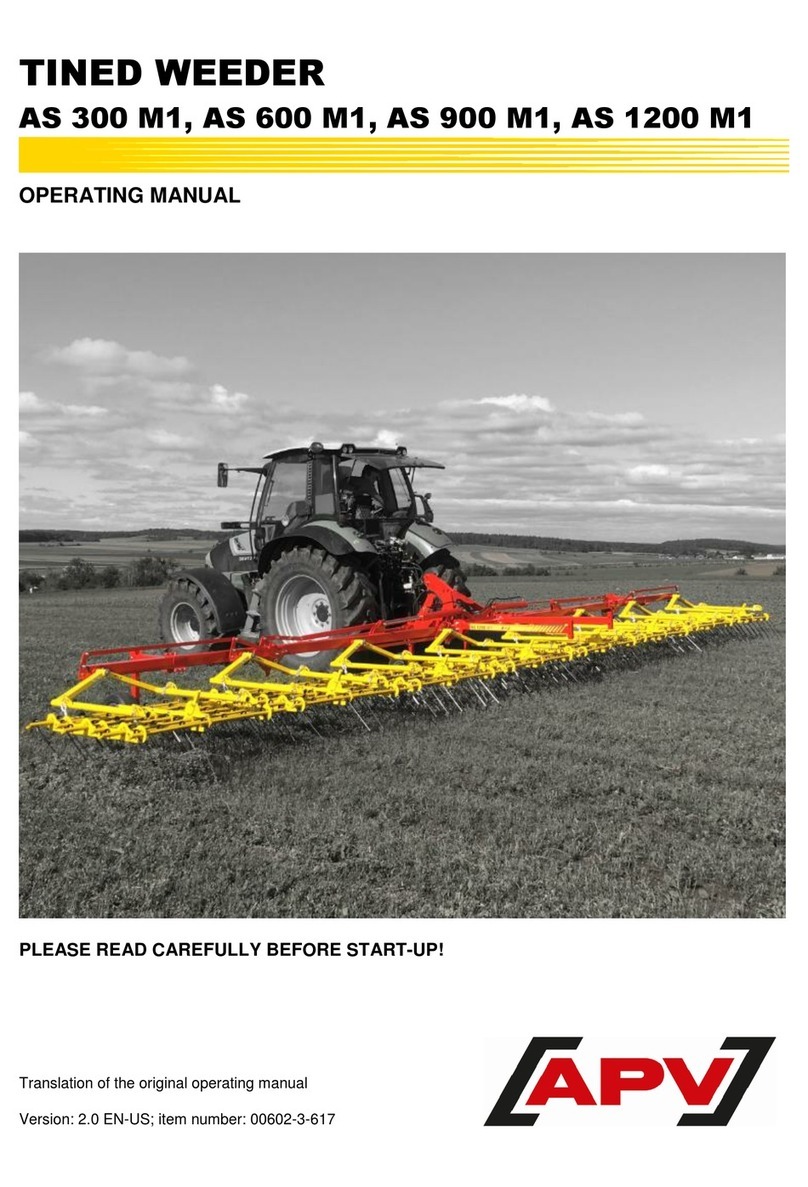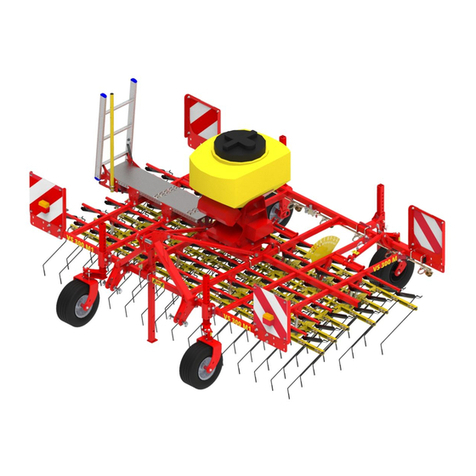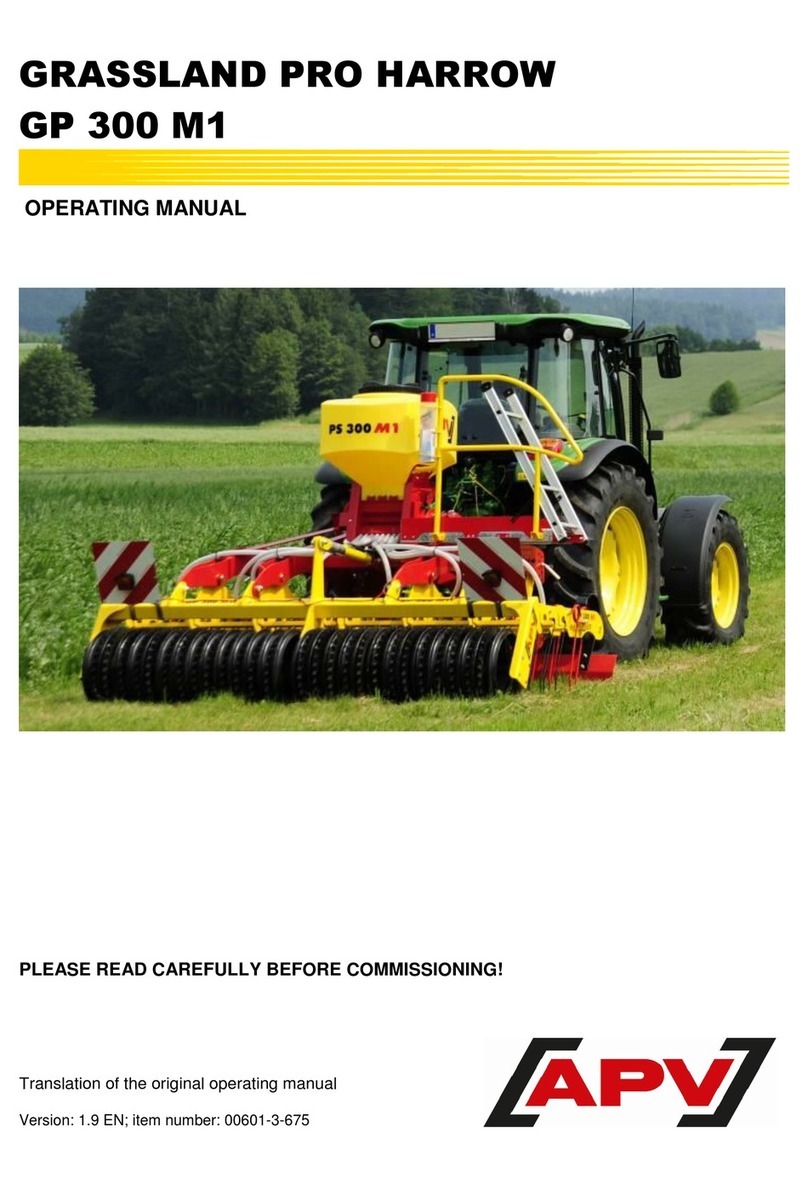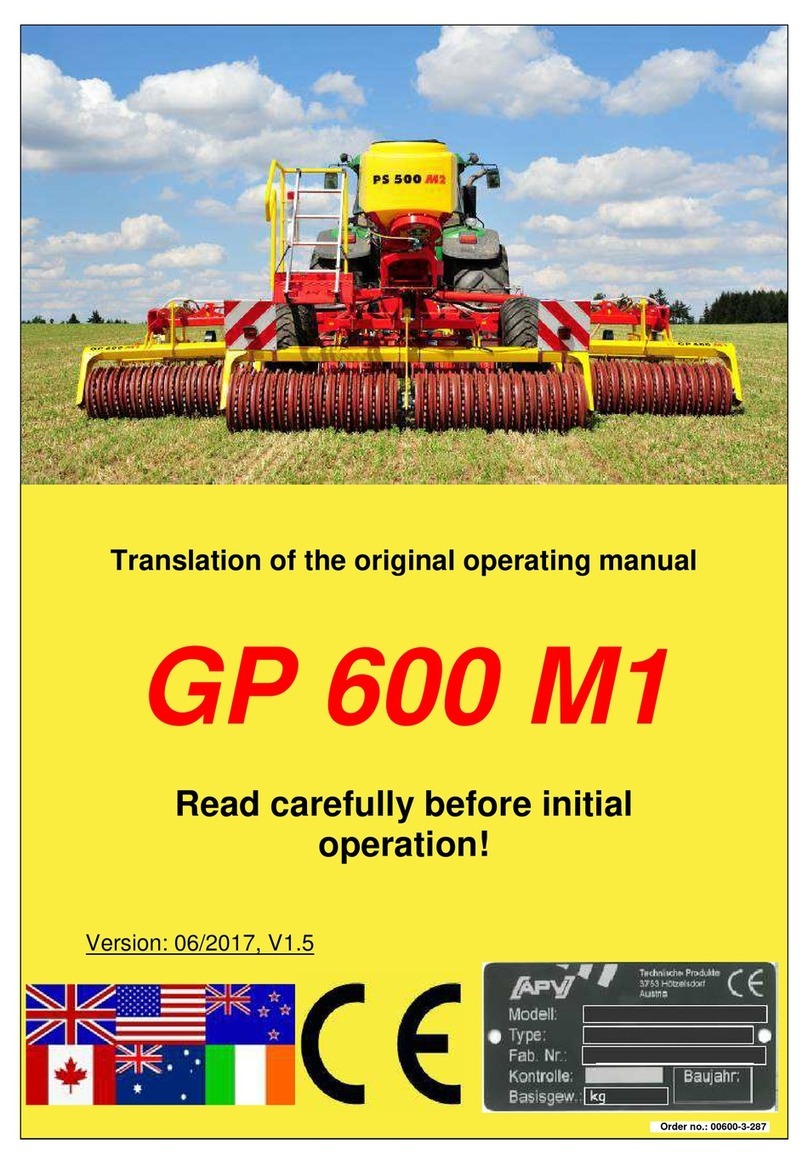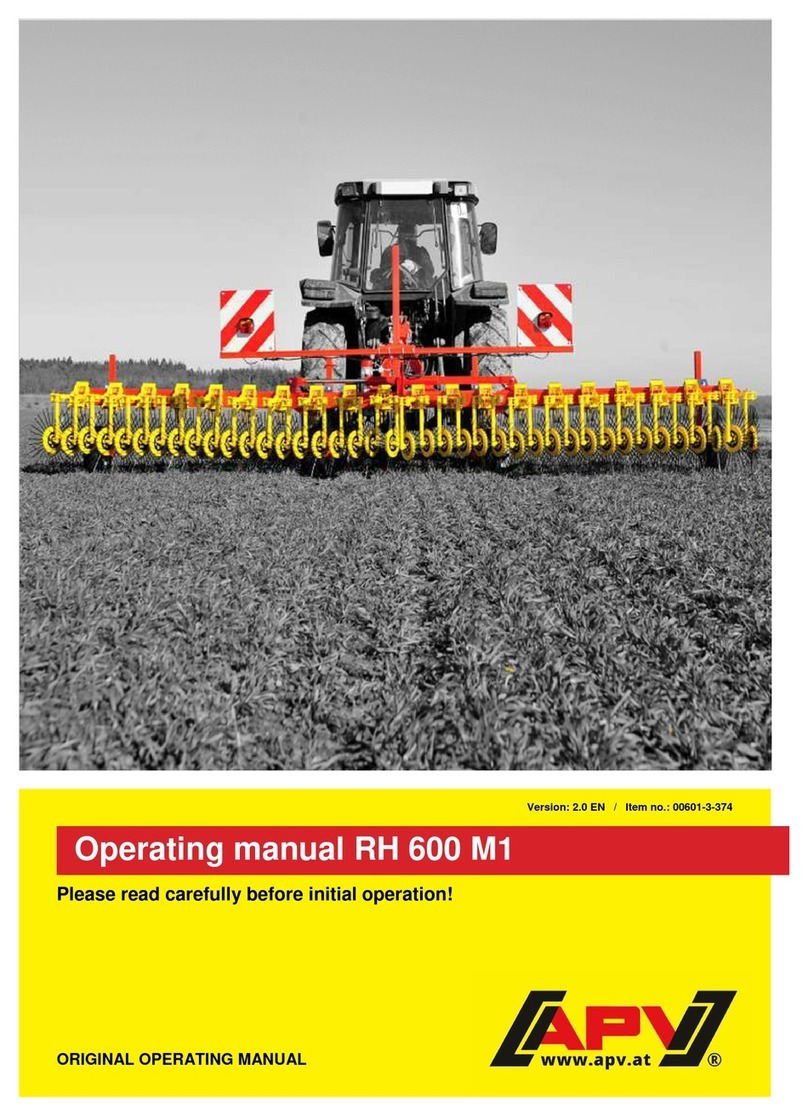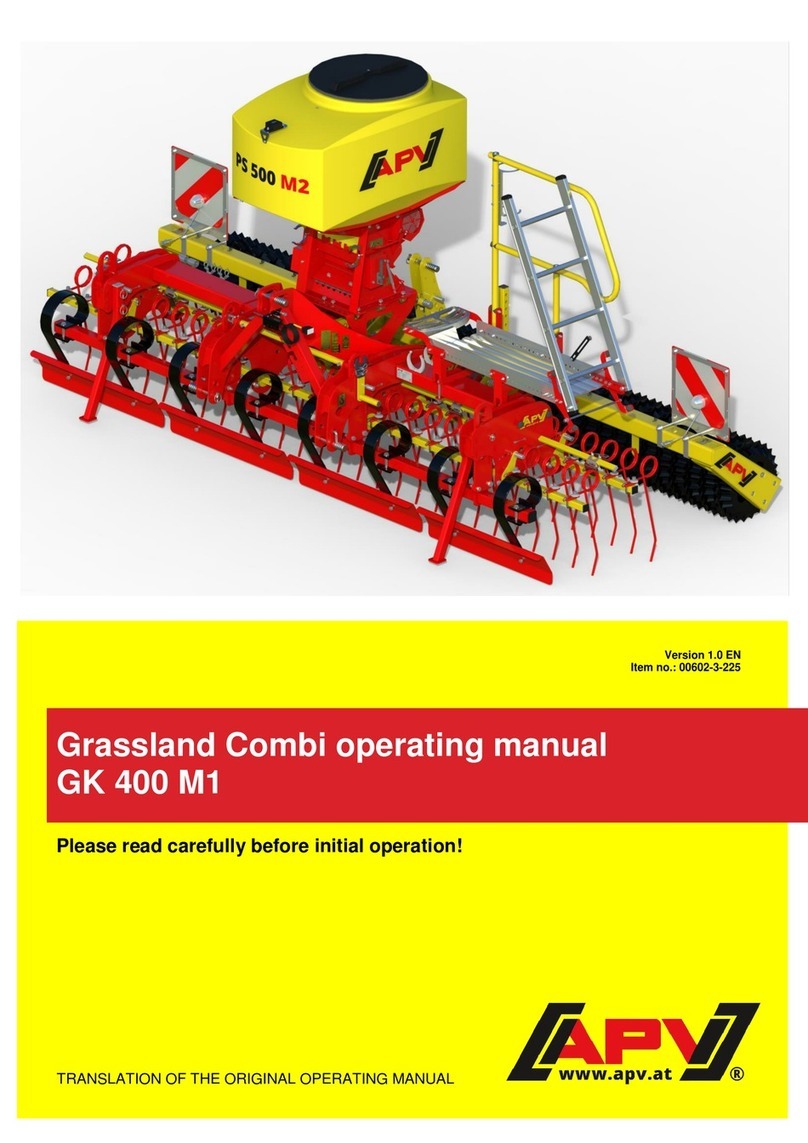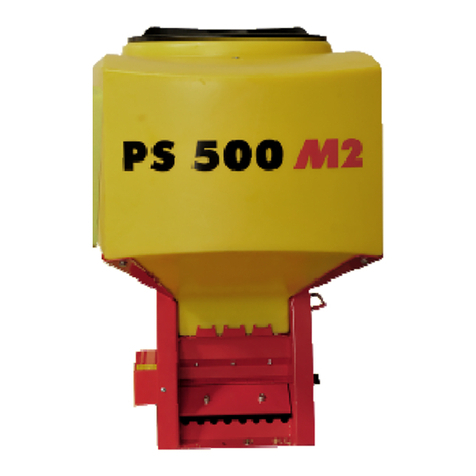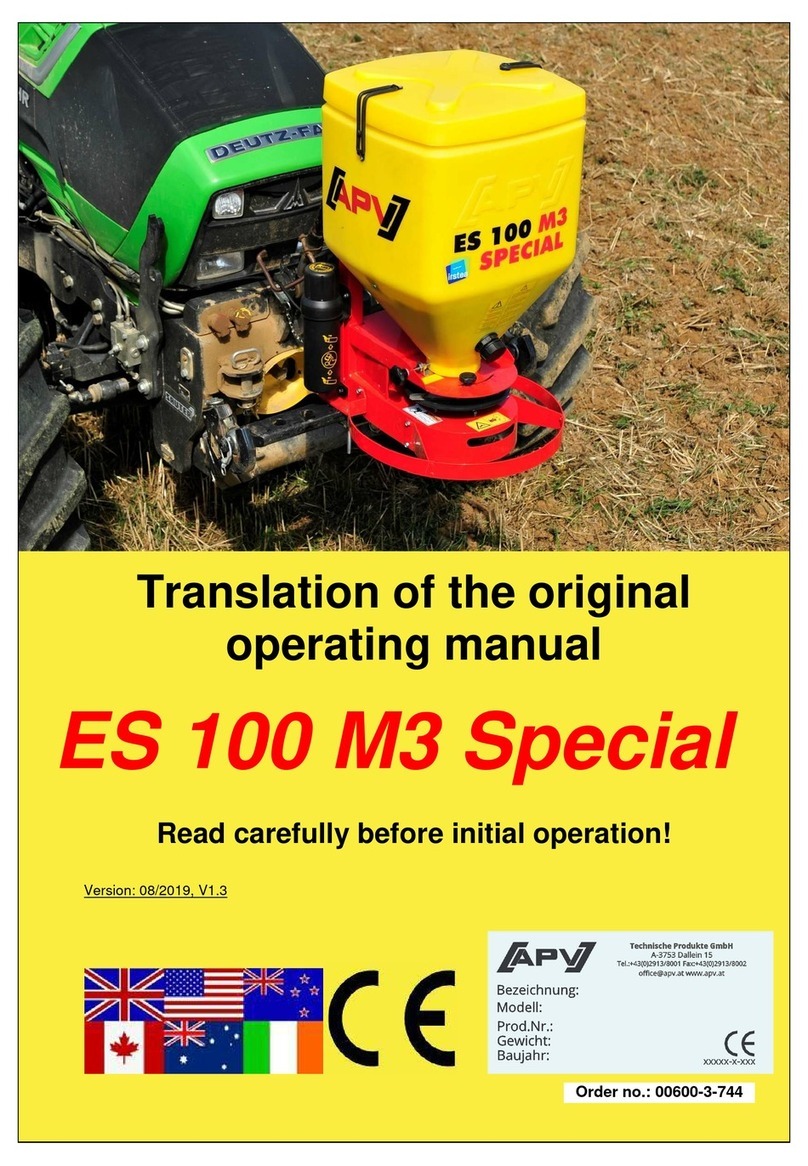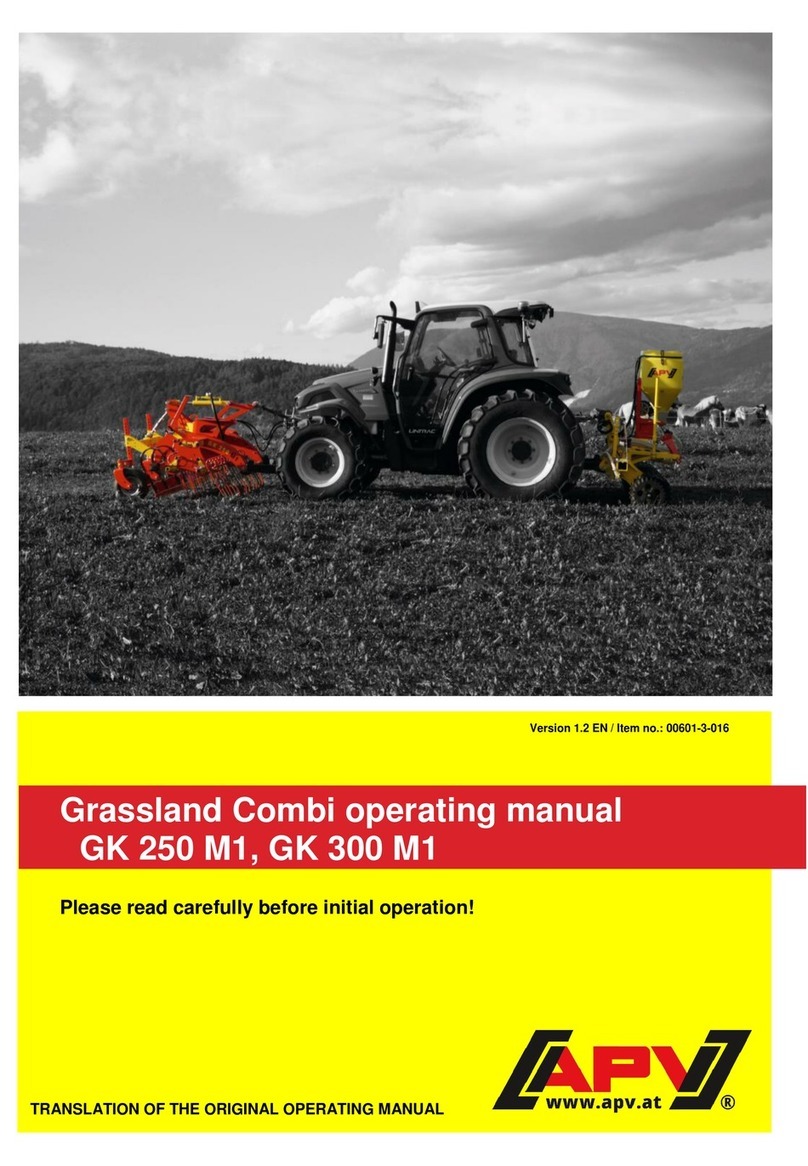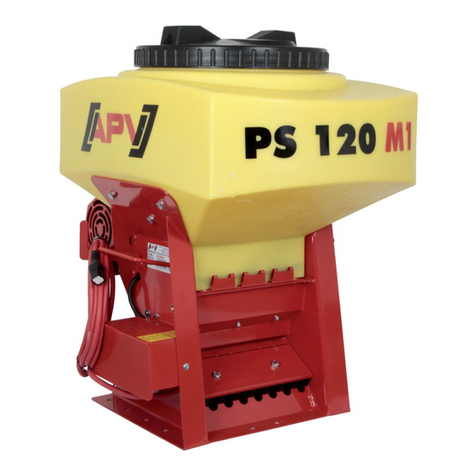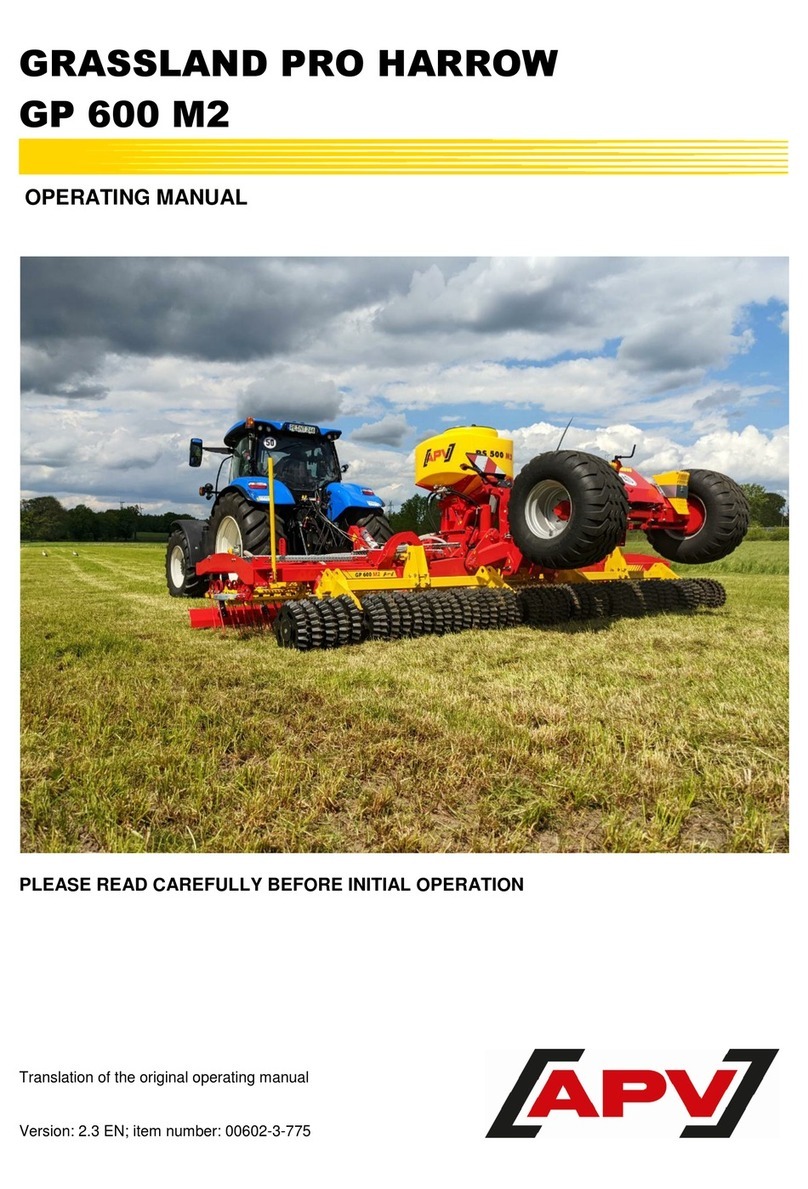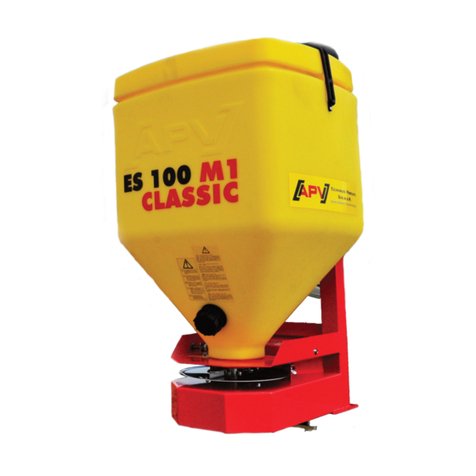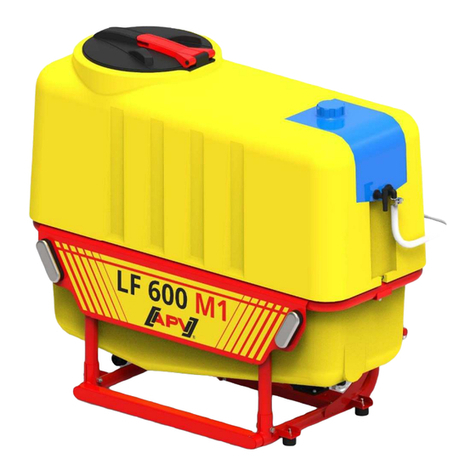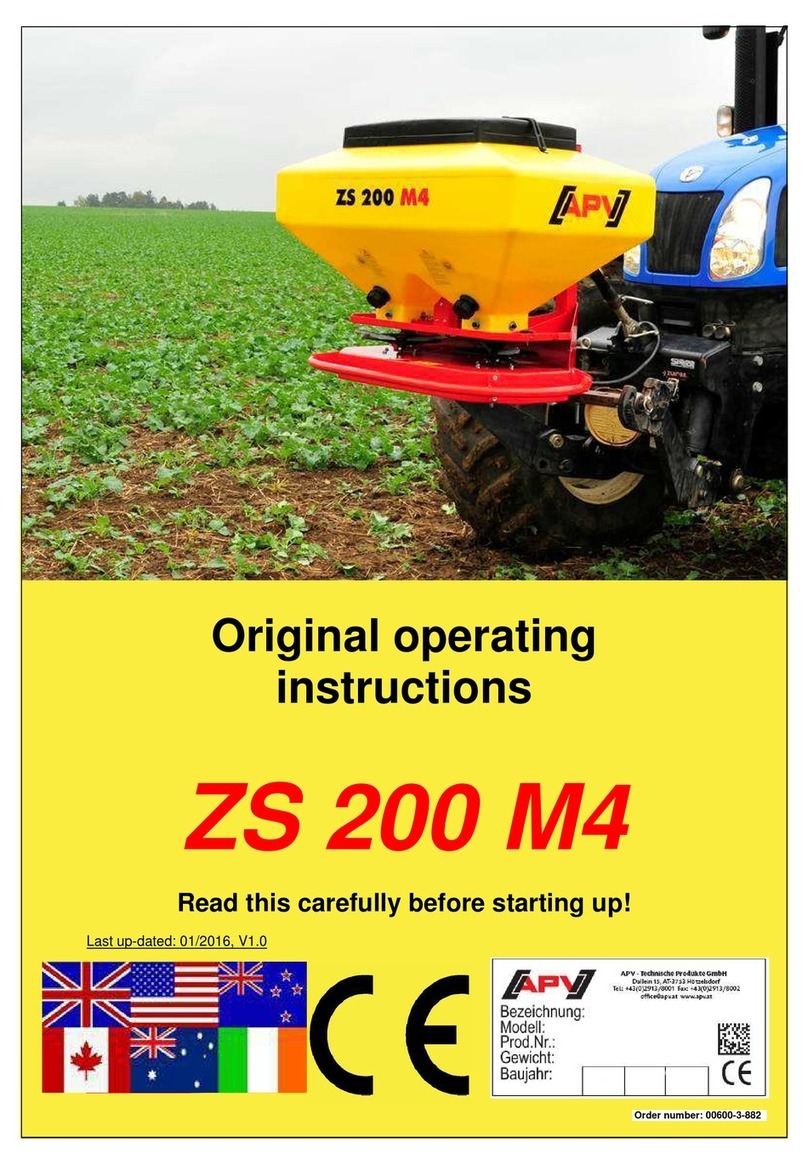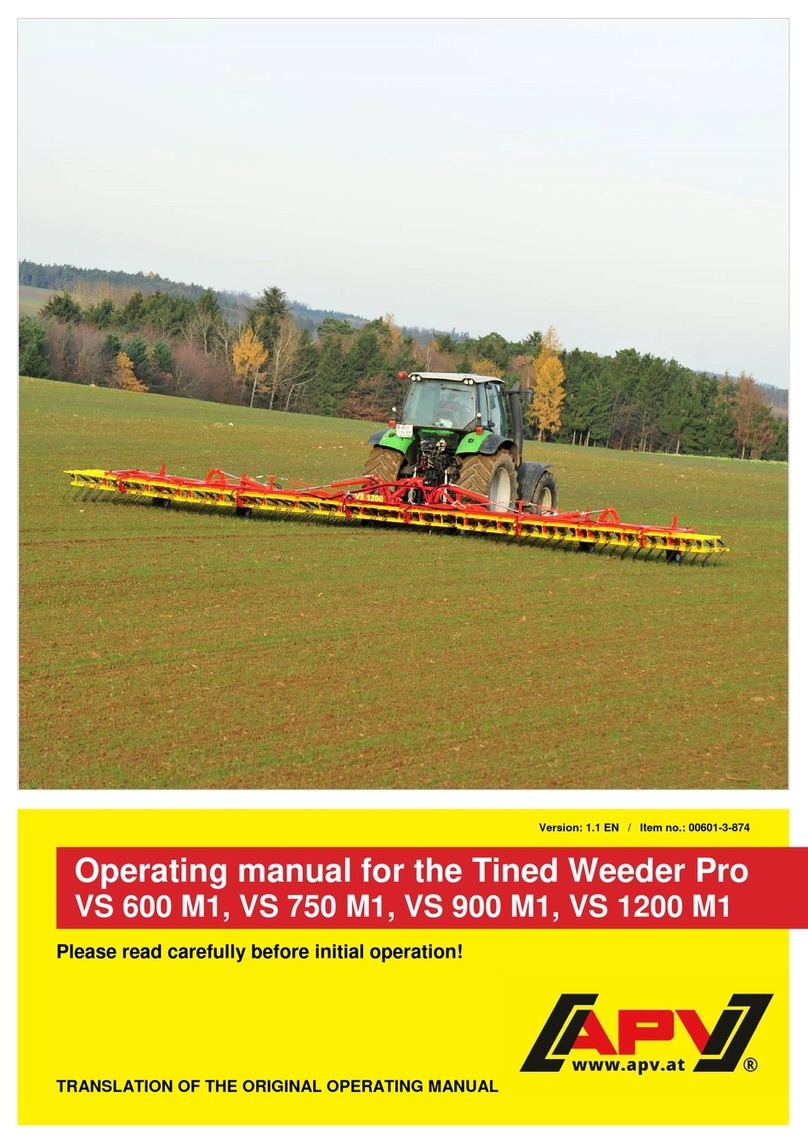
2
1
General information............................................................................................ 4
1.1
About this operating manual.................................................................... 4
1.2
Identification of the implement................................................................. 5
1.3
Service..................................................................................................... 6
1.4
EC Declaration of Conformity.................................................................. 6
2
Description .......................................................................................................... 7
2.1
Layout and functioning of the seed drill................................................... 7
2.2
Layout and function of the hydraulic fan (HG 300 M1)............................ 9
2.3
Layout and function of the fill level sensor ............................................ 10
2.4
Scope of delivery................................................................................... 10
2.5
Technical data ....................................................................................... 11
3
Safety ................................................................................................................. 12
3.1
Safety instructions in this document...................................................... 12
3.2
Basic safety regulations ........................................................................ 12
3.3
Intended use.......................................................................................... 13
3.4
Personnel requirements ........................................................................ 13
3.5
Personal protective equipment.............................................................. 14
3.6
Safety devices ....................................................................................... 15
3.7
Dangers and safety measures .............................................................. 17
4
Transport, installation and commissioning ................................................... 20
4.1
Attaching the seed drill to a soil tillage implement ................................ 20
4.2
Attaching the seed drill to a tractor........................................................ 21
4.3
Installing the dispersion plates on the soil tillage implement................. 22
4.4
Connecting the hoses............................................................................ 24
4.5
Connecting the hydraulic fan (HF)......................................................... 25
5
Operation ........................................................................................................... 27
5.1
Setting the hydraulic fan (HF)................................................................ 27
5.2
Setting and adjusting the spread rate.................................................... 29
5.3
Regulating the seed flow rate (calibration test) ..................................... 30
5.4
Preparing the seeding shaft .................................................................. 31
5.5
Selecting the right seeding shaft ........................................................... 32
5.6
Changing the seeding shaft................................................................... 32
5.7
Checking the ease of motion of the seeding shaft ................................ 35
5.8
Setting the brush pressure .................................................................... 35
5.9
Setting the air control flaps.................................................................... 36
5.10
Setting the fill level sensor..................................................................... 37
5.11
Filling the spreading material tank......................................................... 38
Table of Contents
